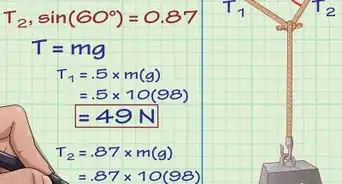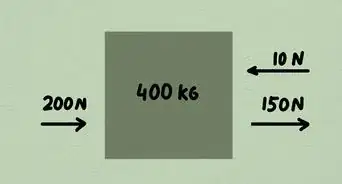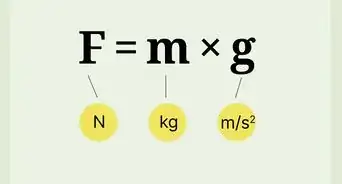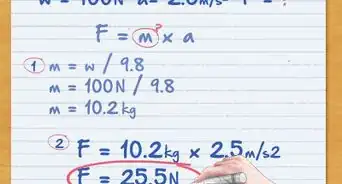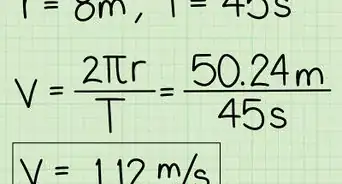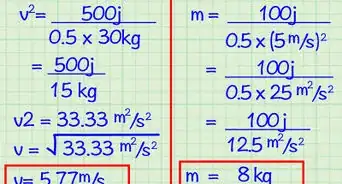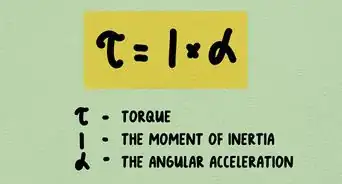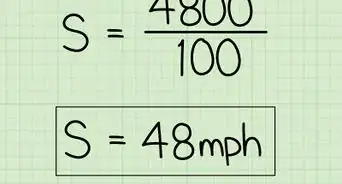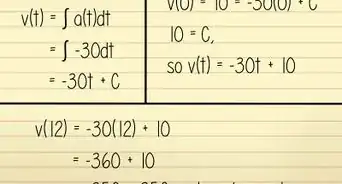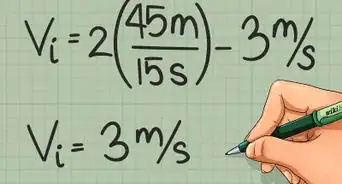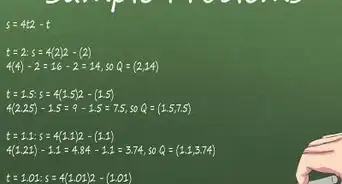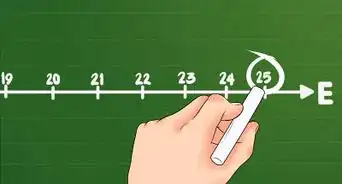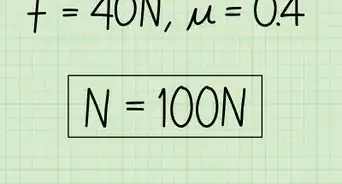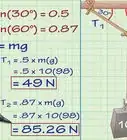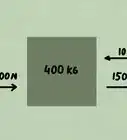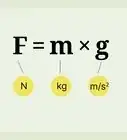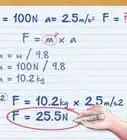X
wikiHow is a “wiki,” similar to Wikipedia, which means that many of our articles are co-written by multiple authors. To create this article, 11 people, some anonymous, worked to edit and improve it over time.
There are 8 references cited in this article, which can be found at the bottom of the page.
This article has been viewed 47,823 times.
Learn more...
Momentum is the measurement of the quantity of an object's motion. You can find momentum if you know the velocity and the mass of the object. It will be easy once you understand the formula.[1]
Steps
-
1Write down the formula . In the formula, stands for the momentum, stands for the mass, and stands for the velocity.[2]
-
2Find the mass. Mass is the amount of matter in an object.[3] To measure the mass of an object, you can use a balance. In physics, there is a rule: you have to measure things in SI units which all the scientists in the world use. The SI unit for mass is kilogram or kg.[4]Advertisement
-
3Find the velocity. Velocity is the speed and the direction that the object travels.[5] Right now, we will only concentrate on the speed part. (While speed is just a scalar that has just a magnitude, velocity is a vector that has a magnitude and direction. However, momentum is not affected by direction.) You can calculate the velocity of an object by dividing the distance that the object traveled by the time it took to travel the distance. Again, you have to measure velocity in SI unit. The SI unit for velocity is m/s (meters per second).[6]
-
4Following the formula , plug in the mass and the velocity.[7]
-
5Multiply the mass by the velocity. That is the momentum! The measurement for momentum is kg*m/s.[8]
- For example, when the mass of an object is and its velocity is , then its momentum is equal to .
Advertisement
Community Q&A
-
QuestionWhat if I don't have the mass?
 Community AnswerThen you need to find the mass, because there's really no way to calculate momentum without it.
Community AnswerThen you need to find the mass, because there's really no way to calculate momentum without it. -
QuestionHow do I calculate momentum if the velocity is in mi/hr?
 Community AnswerStop measuring using the imperial system. You can multiply by 5/8 to get it to km/hr and then divide by 3600 to get it to km/s and then multiply by 1000 to get it to m/s, but that would only give you an approximation as a kilometre is not exactly 5/8 of a mile.
Community AnswerStop measuring using the imperial system. You can multiply by 5/8 to get it to km/hr and then divide by 3600 to get it to km/s and then multiply by 1000 to get it to m/s, but that would only give you an approximation as a kilometre is not exactly 5/8 of a mile. -
QuestionHow do I calculate momentum if I don't know the mass?
 Community AnswerIn order to do this, you need to know the mass. Or, multiply the density by the volume and you get the mass.
Community AnswerIn order to do this, you need to know the mass. Or, multiply the density by the volume and you get the mass.
Advertisement
References
- ↑ https://www.khanacademy.org/science/ap-physics-1/ap-linear-momentum/introduction-to-linear-momentum-and-impulse-ap/v/introduction-to-momentum
- ↑ https://www.physicsclassroom.com/Class/momentum/u4l1a.cfm
- ↑ https://www.qrg.northwestern.edu/projects/vss/docs/space-environment/2-what-is-mass.html
- ↑ https://www.nist.gov/pml/weights-and-measures/si-units-mass
- ↑ https://www.khanacademy.org/science/physics/one-dimensional-motion/displacement-velocity-time/a/what-is-velocity
- ↑ https://www.mathsisfun.com/measure/speed-velocity.html
- ↑ https://www.calculatorsoup.com/calculators/physics/momentum.php
- ↑ https://www.bbc.co.uk/bitesize/guides/z32h9qt/revision/1
About This Article
Advertisement








